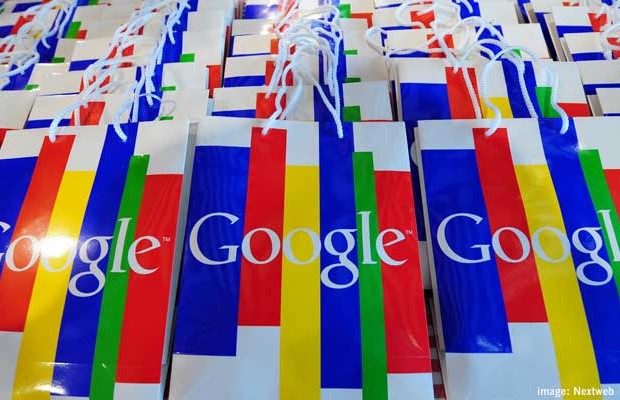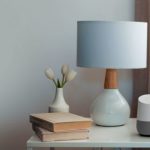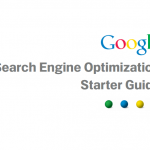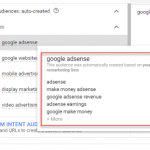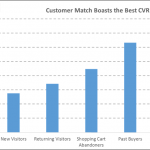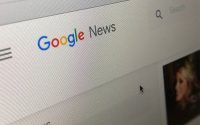Google purchase Button: Retailer’s Boon or satan’s cut price?
could 21, 2015
Google meets Amazon; a captivating idea in idea which may transform stark truth in apply quickly sufficient. In a so much anticipated move, Google is apparently making ready to incorporate buy buttons inside some of its subsidized search commercials on mobile devices. First stated by means of Alistair Barr and Rolfe Winkler in a up to date Wall side road Journal article, many are reading the transfer as a proactive attempt to stop the steady bleed of users turning faraway from its heretofore pc friendly search platform in prefer of extra cell-centered ecommerce apps like Amazon and eBay. To be clear, nothing has happened but, but mounting proof suggests so as to soon. If and when it does, the transfer to a Google buy button is usually a boon for sure retailers struggling to take hold of the attention of itinerant and capricious cellular consumers or, simply as simply, a devil’s cut price for others trying to convert the identical into long-term, loyal consumers.
What it is
So how exactly will the Google purchase button work? according to the WSJ article, the buttons will accompany subsidized (paid) search results, that are ceaselessly displayed under a keep on Google heading at the prime of the web page. purchase buttons is not going to appear in natural search results. When cellular consumers click on on the purchase buttons they’ll be taken to any other Google product web page to complete the acquisition, where they are able to make a selection sizes, colors, shipping options, and so forth., in addition to full the acquisition.
This closing motion—finishing the purchase—is a big one for shops and due to this fact a potential supply of controversy for Google’s buy button concept.
underneath the present setup, outlets ship data feeds to Google for the merchandise they’re promoting on-line after which pay Google when customers click on via to their websites. below the new idea, Google would take issues one step additional and handle the actual buy transaction. In a stroke, its business model would shift from referral to transactional, from a purchase conduit to a purchase destination.
not pretty, many shops believe this might demote their relevance in the purchase cycle and weaken their relationships with shoppers.
And that is the place things get tough. In a merciless twist of fate for Google, lots of its largest search advertisers happen additionally to be outlets. And, as the WSJ article aptly factors out, Google can’t manage to pay for to upset outlets as a result of they are among the largest spenders on the company’s search ads, in line with a study final year via ad Age and search advertising and marketing agency AdGooroo.
In equity, Google is trying to ease outlets’ considerations with the aid of announcing that it will allow consumers who use the purchase buttons to opt into the same marketing packages they would’ve been uncovered to on retailers’ personal web sites. furthermore, Google guarantees that its product pages will be heavily branded for the retailers promoting the items, and can embody suggestions for different things to purchase from the retailer.
that every one sounds nice, however who holds the bank card knowledge? under the buy button application, Google will retailer consumers’ bank card knowledge and retailer the information for future purchases on its procuring pages. furthermore, Google is not going to share this fee knowledge with retailers, but will merely pass the funds on to retailers after they’ve been amassed. In essence, Google is agreeing to pass along the fruits of the sale so long as it (Google) controls the means of its copy.
Hmmm…
On the brilliant side for retailers (i guess) Google is happy to be paid only via its present promotion model slightly than taking a section of the gross sales price of things, which is how eBay and Amazon do issues.
With the buy button, Google is saying the same thing to shops as it always has: you pay us to advertise products on our search engine, and we’ll get shoppers to purchase them. This time round, though, the tech titan is altering the definition of how they’ll get customers to buy.
Why It’s taking place
good enough, so we get the what; now how concerning the why? Ostensibly, like most other issues in digital in this day and age, it all has to do with mobile.
information and customary expertise tell us that world is going cell, a message that Google is listening to loud and clear. Commenting on the new AdWords overhaul, Google’s VP Jerry Dischler, who heads up product management for search advertisements, had this to claim to John Koetsier of challenge Beat back in early may: “We’ve hit an inflection level….There at the moment are extra Google searches on mobile than on pc in ten countries, together with the U.S. and Japan.”
certainly, the global surge in smartphone utilization (in line with Google as reported within the WSJ, searches on cell gadgets now outnumber these on non-public computer systems in 10 nations, including the U.S. and Japan) is compelling Google to essentially re-work its mobile ad supply variation.
For starters, mobile gadgets have smaller screens, and smaller displays provide less space for ads. cellular ads also earn much less cash for Google, partly because of their decrease conversion charges, which might be largely due to their smaller monitors—or extra precisely, the navigational hurdles and overall crappy consumer expertise cellular shoppers face when clicking on a mobile advert after which having to enter in credit card and transport data on their smartphone-sized displays. this is the reason many cell customers now desire mobile apps like Amazon and eBay, the place private information is preloaded and purchases are easier to navigate.
Google is positioning the buy button as a cell commerce panacea of sorts that guarantees to resolve these nettling mobile UX considerations. Google is telling its retail promotion companions that the new purchase button will scale back friction and hasten the path to purchase for cell shoppers, thereby making improvements to cellular advert conversion charges. better cellular advert conversion rates imply Google can charge more for mobile ads, and so it goes.
In a broader experience, you could see how having an speedy purchase button may gain advantage Google’s related stakeholders—its mobile customers, its advertisers, and its shareholders—in three dissimilar (although interrelated) methods:
1. keeps cellular users satisfied – An more desirable cell UX gives consumers a cause to buy throughout the Google search engine as a substitute of ecommerce apps like Amazon and eBay.
2. keeps Advertisers happy – with the aid of making it more uncomplicated for customers to purchase things through its search engine on cellular units, Google can shore up its cellular advertising revenue adaptation. presently there are more cell users than ever, and as mentioned above, it’s in point of fact inconvenient to complete a purchase transaction from a cell advert on Google. by using bettering this cell consumer expertise Google can exhibit advertisers greater conversion metrics and indirectly charge extra for cellular advertisements.
three. retains Shareholders happy – The buy button will allow Google to continue patrons’ monetary data and collect extra purchaser data, in order to fortify advert retargeting and, sooner or later, advert revenue. Google’s new buy button and retail pages will enable the company to collect a plethora of data on consumer shopping for patterns, all of which can be utilized to refine its ad retargeting capabilities, once again enabling Google to charge more for cell commercials.
moreover, Google’s retention of cell customers’ credit card information, when blended with its heightened ability to retarget advertisements, might lead to even higher gross sales conversion rates through upselling and habitual purchases. All of this, as soon as once more, would enable Google to charge more for its cellular advertisements, additional adding to the company’s already massive bottom line.
What all of it method
putting issues in a broader viewpoint, I view Google’s incorporation of a buy button as part III of a 3-part act that started with its cell-pleasant search algorithm replace (i.e. “Mobilegeddon”) back in April, and continued with the relaunch of its massively transformed however resoundingly cellular-centric AdWords platform in early may just. Taken collectively, the 2 seem to pave the way for the buy button performance on cell ads.
On the steadiness, Google’s proposed buy button it will likely be a good thing for mobile consumers, just as it’s going to probably be an excellent thing for Google and its shareholders. As as to whether it’ll be boon or a devil’s discount for shops, the jury’s nonetheless out. I could easily see it benefiting retailers much less curious about fostering consumer loyalty and instead having a look to maximize one-time/impulse purchases, especially for products they are struggling to promote.
I think in any case all of it comes all the way down to friction. lowering friction for cell users, the buy button would also reduce friction for Google’s ongoing consumer knowledge collection efforts, whereas on the related time including friction (desiring to get customers to opt in, lack of control over shopper funds, and so forth.) for outlets looking to take care of the purchase cycle and forge lasting connections with cellular shoppers.
retailers taking into consideration the Google buy button, then, would do well to remember the fact that, as with so many issues in life, the devil’s in the small print.
Digital & Social Articles on industry 2 neighborhood
(158)


